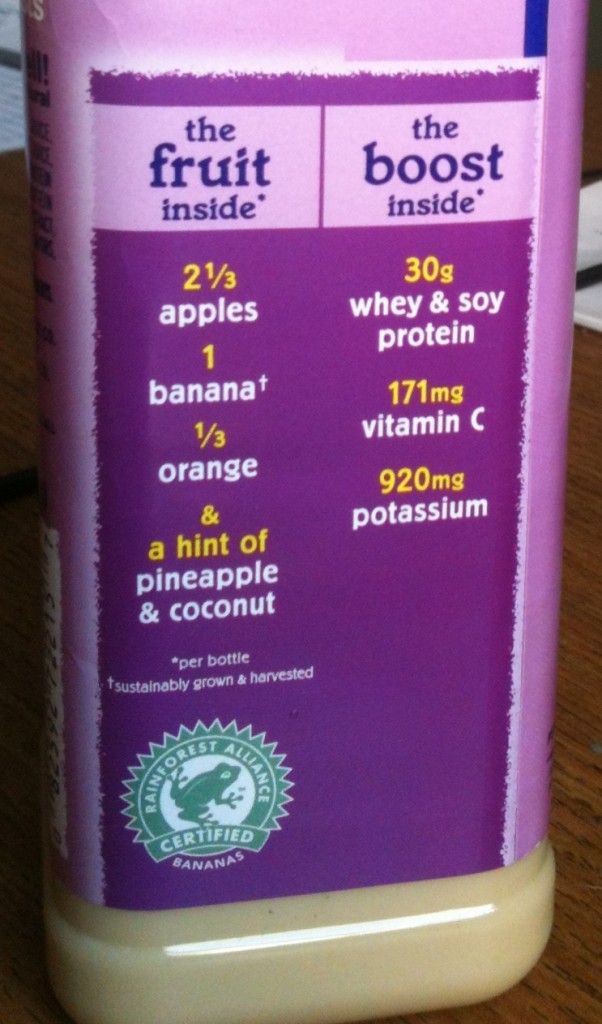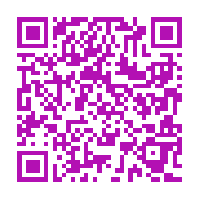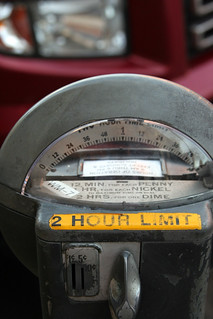Expanding on last week’s article, you can do a lot more with QR Tags than the typical bit of merely encoding a website URL. Let’s list some of the things that are technologically feasible. Along the way, I’ll also throw out a bunch of ideas for how small businesses can make good use of each feature.
- Map coordinates
- Do you have printed brochures and other “take-away” literature? Have a physical location like a store? Print one of these tags near your address. You won’t have to include a low-resolution map or lengthy directions to your location from every possible direction. Users who scan the tag will have it come up on a map right on their phone. From there, the phone’s built-in GPS system will guide them to you from wherever they are.
- Even if your store’s location is familiar to shoppers, perhaps you are having a special sale or event at another location (such as a clearance sale from your warehouse). Or maybe your business is growing and you’re opening a new location. Use a Map Coordinates type QR Tag to direct shoppers.
- Want to show where your materials or ingredients come from? A Map Coordinates QR Tag can pinpoint it for you!
- Tweets and retweets for Twitter
- The idea that you can write an article or blog post and put retweetable pull-quotes at the end isn’t new. I do it all the time on my website and I borrowed the idea after seeing others do the same thing. But what if your article will appear in print? Then you can’t really do it, right? Wrong! Sure, you can’t include hyperlinks but you can embed the retweet into a QR Tag. If readers can just scan the tag and not have to retype the tweet on their phone, it makes it much more likely that they’ll actually send the retweet.
- Facebook profiles and Likes
- It’s pretty common to see companies asking people “Like us on Facebook” in their ads. Why not go one step further and include a QR Tag that automates the process!
- Have something cool on your corporate Facebook page? Something users won’t find on your website or anywhere else but Facebook? (You should.) Direct users to check it out by including a QR Tag that points users right to what you want them to see. They’ll appreciate not having to search for you or type in your profile manually.
- LinkedIn profiles and status updates
- Encourage people to connect with you on LinkedIn by making it super easy. Create a QR Tag that points to your LinkedIn profile. Let users know what to expect when they scan the tag (that they’ll be taken to your profile page) and ask them to send a connection request when they get there.
- FourSquare check-in locations
- Have a hip location that user’s like to tell their friends about? Make it a FourSquare location then post a QR Tag somewhere in your store. That makes it super easy for shoppers to check in and let others know they’ve been by to see you. (Ideally, it prompts those who see the check-in to come check you out themselves.)
- Have multiple locations? Put a different check-in at each one!
- Links to YouTube videos and iTunes songs
- Do you have promotional videos, video testimonials, how-to videos and other kinds of videos showing your product or service in use? Do you have customer-submitted videos touting your business? If they’re not already, all of those should be up on YouTube. Then you can create QR Tags to point to some of them.
- Specifically create a video showing how to assemble or install your product. Now your installation instructions can be a business card-sized sheet with a QR Tag pointing to that video online. It can even be a sticker attached to the product itself!
- Do you have a book, song, course, app or other media that is available in the iTunes store? Create a QR Tag to point users right to it.
- Simple text (almost anything you want, within the Tag’s capacity)
- Have a highly customizable product? Let’s use a coffee shop as an example. A customer comes in and orders an African blend with a shot of orange syrup, soy milk and a dash of cloves. You create a Simple Text QR Tag on the spot describing the exact ingredients for that particular cup of coffee. Give it to the customer or attach it to the cup. If the customer wants to come back and order another just like it at a later time (or recommend it to a friend) all she has to do is scan the tag.
- Create a contest or scavenger hunt which requires participants to assemble clues and solve some kind of mystery. Embed some or all of the clues in Simple Text QR Tags. Because they’re not online, participants will have to actually scan the tags. Scatter tags around your city, publish them in magazines or newspapers, even give some out with purchase of a product.
- Encode a thank you note or discount code that customers see only after they’ve purchased one of your products. It can be printed right on the receipt, invoice or packing slip.
- Phone number
- Want to get customers to call you? Sure, you can print your number and ask users to dial it. Or you can use a Phone Number type QR Tag that will auto-dial it for them.
- Skype connection information
- Connect on Skype? This QR Tag is similar to the phone number type except that it connects a Skype call rather than dialing a regular phone call.
- Text (SMS) message, including the number that the message should be sent to
- Want confirmation that your product was delivered? Attach an SMS Message type QR Tag to the package and ask the courier or recipient to scan it upon receipt of the package. It will automatically send you a text message confirming delivery.
- Email address
- Easily share your email address by embedding it in a QR Tag. No more worries about misspellings or typos.
- A complete email message, including both recipient address and subject line
- Want to invite user feedback via email? Use this QR Tag to simplify the process. You can even pre-fill the first few lines of the email for your users.
- vCard (virtual business card)
- Show that your company is truly green by going paperless even with your business cards! Just carry one card that has a vCard type QR Tag on it. When you show it to a prospect or business partner and they scan the tag, it will add all your contact information to their phone’s address book.
- When you go to a meeting, conference or expo print your own name tag that includes a vCard type QR Tag. Invite those you meet to scan the tag in order to add your contact information to their phone. They’ll remember you!
- Print a vCard type QR Tag on the back of your regular business card. Recipients won’t have to scan or transcribe the information from your card, they can just scan the tag.
- When you travel, create luggage tags with all your info. You could even put your complete travel itinerary.
- Calendar entry
- When you have a special event coming up and want people to mark their calendars, you can embed all the details in a Calendar Entry QR Tag. Scanning the tag will create a calendar entry with date, time, description, location, reminders… whatever details you specify.
- WiFi login credentials
- Have secure WiFi at your location that you selectively open up to certain visitors? Instead of openly sharing the login credentials, either verbally or in print, encode them in a QR Tag. When a user scans the tag, they’ll be connected automatically without actually seeing the credentials.
- PayPal “Buy Now” link, including everything needed for a 1-click purchase
- Let customers buy a product and pay for it with Paypal. While buttons and hyperlinks work great online, for a physical product try a QR Tag. Scanning it takes the customer to a Paypal form with all the fields already filled in for them.
- Hold an auction or fundraiser with Paypal type QR Tags on the purchase sheet.
- Turn your phone into a portable cash register by carrying around a pre-printed cheat sheet with QR Tags for all your most common items or prices. Scan the appropriate one and half your work is done for you.
- Carry the portable cash register concept one step further by putting tags on all your pricing labels.
- Website URL
- Don’t just send users to your website, send them to a specific page on your site. Better yet, make it a non-indexed page that is hidden from search engines.
- Have consumables that need to be replaced? Let’s say you sell and service copiers and printers. Attach QR Tags to every device. When a user scans the tag on their device, they are taken to a page on your website where they can easily order new toner, parts or schedule a service call for that exact model device. No wading through lots of menu options or trying to remember details about the printer that is down the hall, the tag contains all the data and feeds it right into your online ordering system.
- Is your location inside a mall or in a large industrial park? Someplace complex to navigate but for which regular maps aren’t readily available? Have a map graphic created — it can even be interactive and zoomable if you get really fancy — then post it on a special page of your website. Similar to the Map Coordinates type QR Tag, direct scanners here to really find you once they get close.
There are many creative uses for QR Tags and new uses are being developed all the time. So don’t just send users to your website, wow them by putting the real power of QR Tags to use!
Click any of the icons below to retweet these passages from the above article.
![]() Print a QR Tag near your address on printed brochures and other “take-away” literature.
Print a QR Tag near your address on printed brochures and other “take-away” literature.
![]() Use GPS to guide customers to you from wherever they are.
Use GPS to guide customers to you from wherever they are.
![]() It’s common to see companies ask “Like us on Facebook”. Go a step further and automate the process!
It’s common to see companies ask “Like us on Facebook”. Go a step further and automate the process!
![]() Make it super easy for FourSquare users to check in and let others know they’ve been by to see you.
Make it super easy for FourSquare users to check in and let others know they’ve been by to see you.
![]() Your installation instructions can be a small sticker attached to the product itself!
Your installation instructions can be a small sticker attached to the product itself!
![]() Want confirmation that your product was delivered? Try this!
Want confirmation that your product was delivered? Try this!
![]() Show that your company is truly green by going paperless even with your business cards!
Show that your company is truly green by going paperless even with your business cards!
![]() When you travel, create QR luggage tags with all your info. Even your complete travel itinerary.
When you travel, create QR luggage tags with all your info. Even your complete travel itinerary.
![]() Turn your phone into a portable cash register.
Turn your phone into a portable cash register.
![]() Because QR Tag generators are free, you can try these ideas even for very inexpensive products.
Because QR Tag generators are free, you can try these ideas even for very inexpensive products.


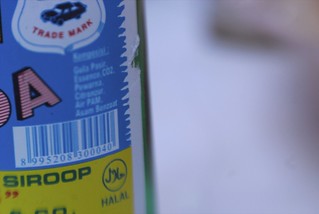
 QR Tags
QR Tags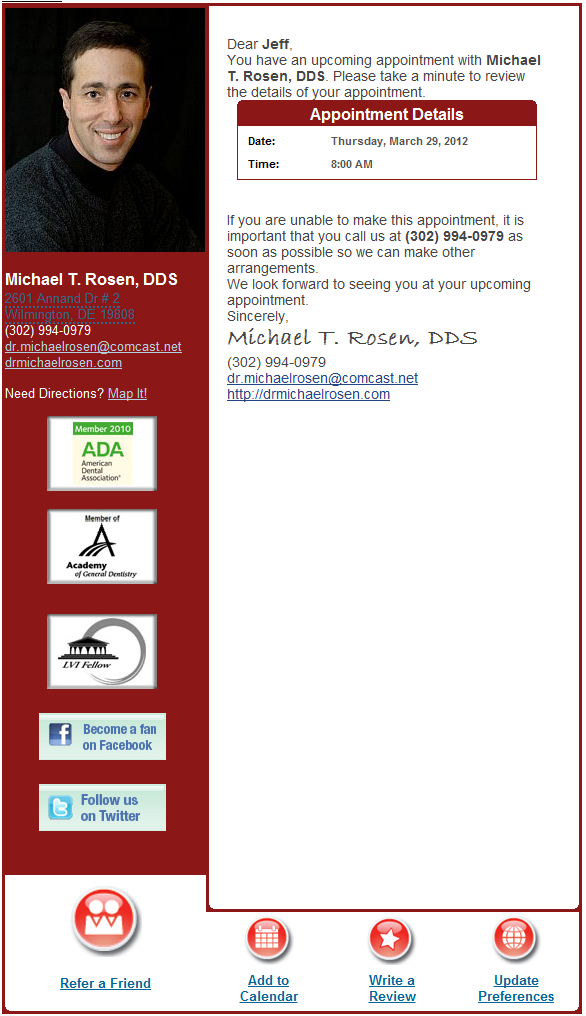

 Have you ever had a Naked drink?
Have you ever had a Naked drink?